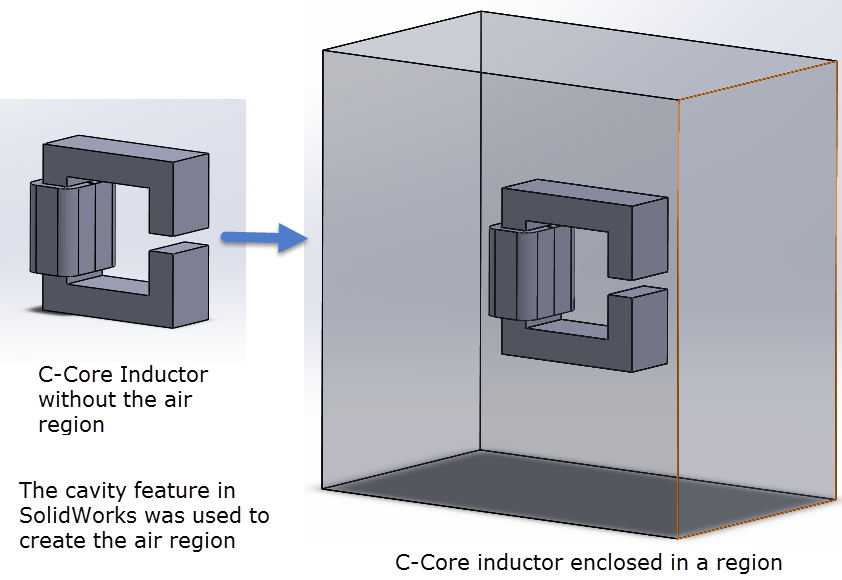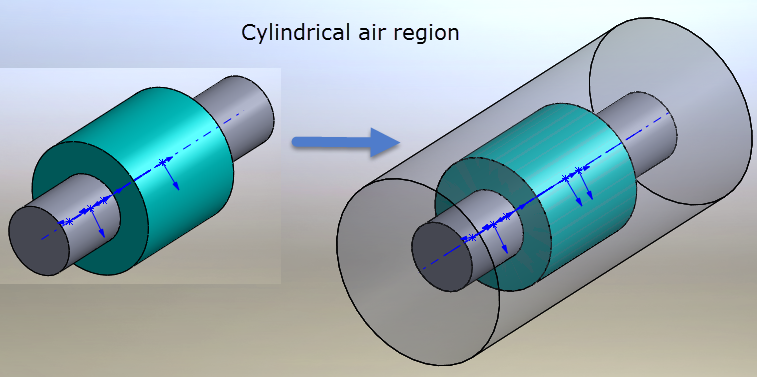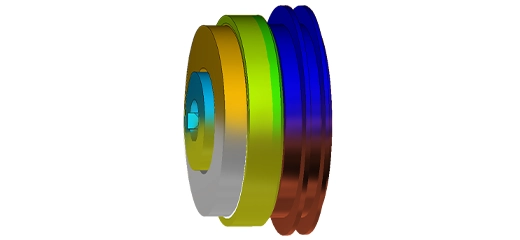Modeling Empty Spaces in Electromagnetic Simulations
In electromagnetic (EM) simulations, accurately modeling the empty spaces around and within an object is crucial for a thorough analysis of magnetic and electric fields. To achieve this, one must create a geometry that fully encloses the components of interest, ensuring it encompasses all necessary spaces where fields could exist. This enclosure is then modified to represent the air or void in and around the object, a step essential for capturing the fields' dynamics accurately. The geometry can be shaped differently—be it box-like or cylindrical—to suit the specific design being simulated. This approach ensures that simulations reflect the true behavior of electromagnetic fields, taking into account the interactions within and around the object.

Figure 1- Air region created around a C core inductor using SolidWorks cavity feature

Figure 2- One can create a cylindrical air region as well for models that are cylindrical in nature
Video explaining how to create air region:
Optimizing Air Region Size in EM Simulations for Accurate Results
When creating the air region in electromagnetic simulations, ensure that it is large enough so that the results at the outer edges of the air region are negligible compared to those near the model. To verify this, plot the magnetic flux density on the air region's boundary faces and compare these values with the maximum magnetic flux density observed within the region. Additionally, the magnetic flux density across these boundary faces should be relatively uniform, indicating a well-defined simulation space.
Conclusion
The application blog effectively addresses the intricacies of modeling air regions in electromagnetic simulations, a crucial step for achieving accurate simulation outcomes. It emphasizes the importance of adequately sizing and shaping the air region to encompass the object of interest, ensuring that electromagnetic fields are accurately captured both within and around the object. This guidance is essential for professionals seeking to enhance the fidelity of their EM simulations, providing a clear pathway to simulating real-world electromagnetic behavior and interactions. Through precise air region modeling, researchers and engineers can significantly improve the reliability and accuracy of their simulation results, paving the way for more informed design decisions and advancements in electromagnetic applications.
